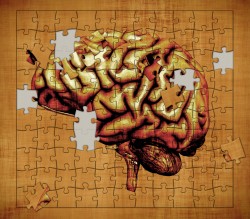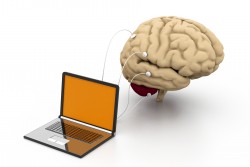Seizures
Is Neurofeedback an Alternative to Medication for Seizures?
 A wide variety of people experience seizure disorders. A seizure reflects a brain that has temporarily lost stability. There are numerous conditions that can cause seizures and many types of seizures people can experience. Having a seizure disorder often negatively impacts quality of life.
A wide variety of people experience seizure disorders. A seizure reflects a brain that has temporarily lost stability. There are numerous conditions that can cause seizures and many types of seizures people can experience. Having a seizure disorder often negatively impacts quality of life.
Reliance on medication is the traditional course of action, but it isn’t the only answer. People with seizures can learn to regulate and stabilize their brains through neurofeedback and achieve lasting results. Neurofeedback helps stabilize the timing in the brain. The brain’s timing is the electrical response that can go awry when someone has a seizure.
Thousands of healthcare professionals, including psychologists, doctors, and registered nurses, use brain training to help people dramatically decrease their seizures by increasing their brain’s stability. When the brain begins to demonstrate stability more consistently, a patient’s doctor can often reduce seizure medication.
Is There Evidence that Neurofeedback Helps Reduce Seizures?
Eighteen, well-run, research studies show how effective neurofeedback can be in the reduction of seizures.
 Since then, neurofeedback has been used to help countless seizure sufferers reduce their seizures. Unfortunately, may people with seizures don’t learn about the opportunity to train with neurofeedback because healthcare professionals, particularly neurologists, are largely unfamiliar with neurofeedback and its efficacy.
Since then, neurofeedback has been used to help countless seizure sufferers reduce their seizures. Unfortunately, may people with seizures don’t learn about the opportunity to train with neurofeedback because healthcare professionals, particularly neurologists, are largely unfamiliar with neurofeedback and its efficacy.
Brain training is exercise for the brain. In helping the brain strengthen its interconnectivity and timing, many brain-related problems can be reduced or eliminated altogether. Like with exercise, it takes consistent practice to achieve results. Once the brain is more stable, often brain training can be stopped. In more complicated situations, some people benefit from periodic “maintenance sessions” to keep their brains operating smoothly.
Examples of Seizure Reduction through Neurofeedback Training
Relief from seizures after 12 years
A woman in Florida suffered from uncontrolled seizures for 12 years. She was being treated by a top neurologist at the University of Miami who prescribed a number of medications. Unfortunately, those medications had significant side effects.
Looking for an alternative, she started brain training and made some lifestyle changes. After neurofeedback, she had no seizures for 3 months, which is considered very unusual with standard neurological treatments. Due to her success, she has been able to significantly reduce her seizure medications.
 A young girl’s life is changed
A young girl’s life is changed
A seven-year-old girl, who was on a number of seizure medications and being treated by a top Harvard pediatric neurologist, was still experiencing up to 100 seizures per day. After turning to a doctor in Massachusetts who includes neurofeedback in his practice, she began intensive neurofeedback training – 5 days a week, including supervised use of home equipment.
After three months of this regimen, she was actually free of seizures. Following four additional months in which the seizures did not reoccur, her seizure medications were greatly reduced. The girl’s quality of life increased exponentially, and her whole family’s life was changed.
Neurofeedback helps the brain work better by teaching it to create healthier patterns more consistently. Brain training has a proven success record with seizures and can be a viable treatment option for many people suffering with a seizure disorder.
To learn more about how neurofeedback can help with seizures or seizure disorder, please visit our Neurofeedback Provider List to see if we have a clinician listed near you.

